Ofcom 2020 Study – Average UK Broadband ISP Speeds Hit 64Mb
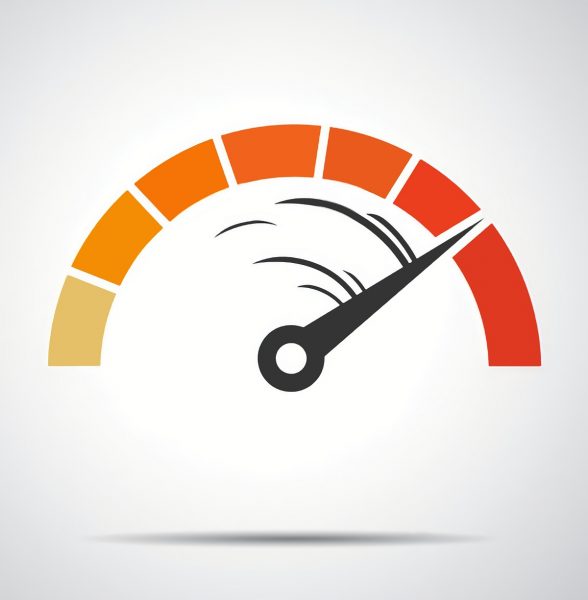
Ofcom has published their annual report into fixed line home broadband speeds, which finds that the average download rate has risen from 54.2Mbps last year to 64Mbps now (uploads from 7.2Mbps to 14Mbps). It also examines the performance and latency of big ISPs including BT, Sky Broadband, TalkTalk, Virgin Media and others.
As usual the regulator’s study is based off data gathered during November 2019 via custom modified routers from SamKnows, which were installed in around 1,950 UK homes (3,075 units in the ISP panel). This method of testing is extremely accurate but the limited sample size does force their report to focus on only the most common broadband technologies, packages and ISPs.
We must also caveat that speed testing like this should never be directly equated to network availability. At present fixed line “superfast broadband” (24Mbps+) networks are available to over 96% of the United Kingdom and that’s mostly from hybrid fibre FTTC (Openreach) and cable DOCSIS (Virgin Media) technology.
Advertisement
A growing number are also within reach of “ultrafast” connections (defined by Ofcom as 300Mbps+ but most others use 100Mbps+), which are still primarily delivered by Virgin Media’s network (covers just over half of the UK). However, the rapid roll-out of “full fibre” FTTP services is having a big impact (here), with full fibre covering 11% of premises at the end of 2019 (up from 7% last year).
Still it should be noted that around a third of the UK continues to take slower and less reliable copper ADSL (up to c.20Mbps) lines and this will drag the overall results down. The take-up of faster connections should improve over time but some people will always be discouraged by issues of cost (faster connections tend to be more expensive), a lack of awareness and so forth.
Average Download Speed (% Annual Improvement)
* May 2020 = 64Mbps (+18.08%)
* May 2019 = 54.2Mbps (+17.32%)
* May 2018 = 46.2Mbps (+27.62%)
* April 2017 = 36.2Mbps (+25.26%)
* March 2016 = 28.9Mbps (+26.75%)
* February 2015 = 22.8Mbps (+21.93%)
* October 2014 = 18.7Mbps (+5.06%)
* April 2014 = 17.8Mbps (+21.09%)
The report itself does a good job of breaking down each connection by technology, but they don’t list 1Gbps FTTP tiers yet due to limited availability. On this point we should remind readers that all sorts of things can affect performance, while technologies that use copper wire (FTTC, G.fast, ADSL) are often negatively impacted by signal attenuation over distance. Likewise ISP network congestion, traffic management, service faults and poor home wiring can still have an impact.
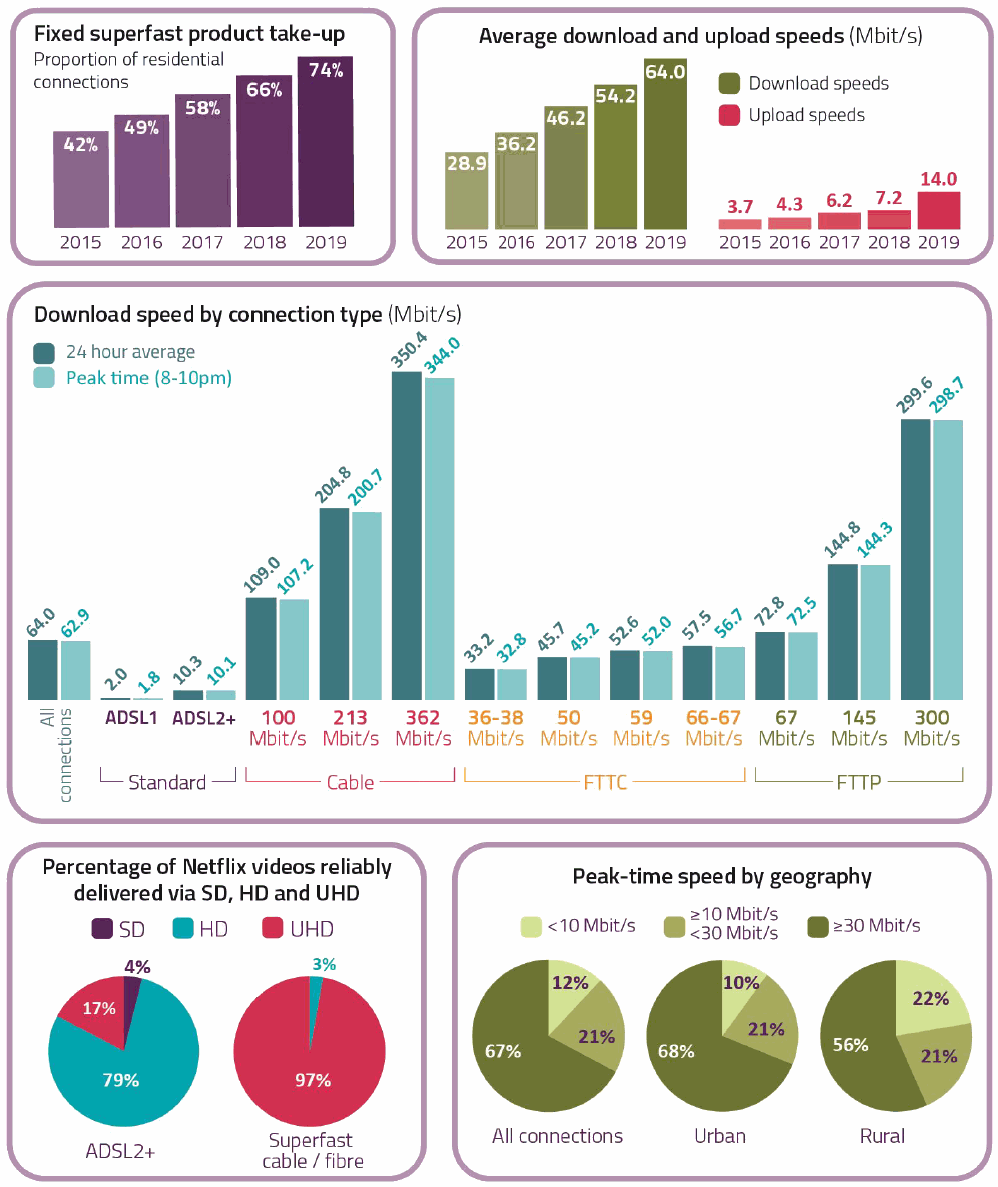
Advertisement
Sadly there are still some parts of the UK where “superfast” connections have yet to reach (e.g. remote rural and digitally disadvantaged urban pockets). At the same time commercial rollouts of full fibre networks in urban areas, which have really picked up over the past two years, are naturally growing at a faster pace than in rural locations.
As usual this means there’s still a clear disparity of performance between urban and rural areas. Sadly Ofcom’s limited data only really considers the two most common rural broadband technologies (i.e. hybrid fibre FTTC and pure copper ADSL lines). Copper ADSL lines tend to be much longer and less reliable in rural locations than urban ones.
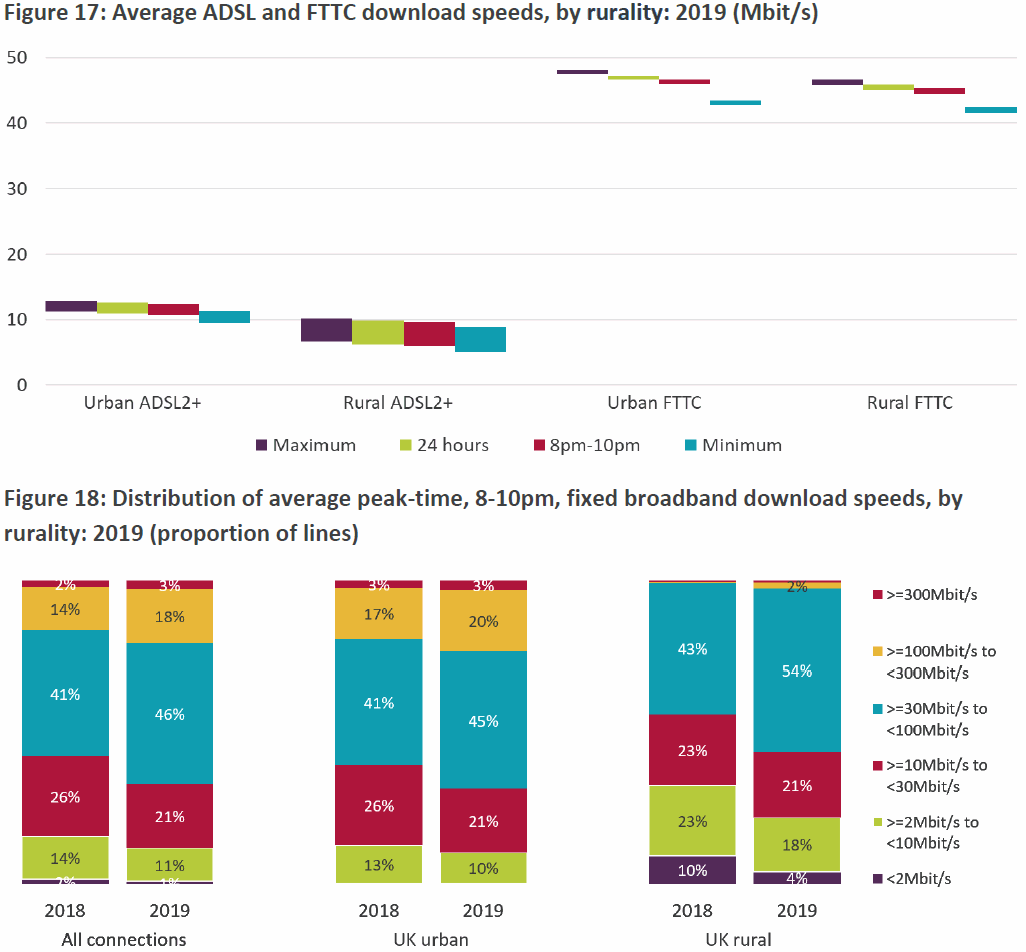
We can see above that second generation ADSL2+ broadband connections delivered an average 24-hour download speed in urban areas (11.7Mbps) that is 36% higher than the average in rural areas (8.1Mbps). By comparison a smaller (3%) difference was recorded in FTTC download speeds for rural areas (45.5Mbps) when compared to those in urban ones (46.9Mbps).
Advertisement
Elsewhere there was an 11 percentage point (pp) difference between the proportion of urban (11%) and rural (22%) broadband lines with an average 8-10pm peak-time actual download speed of less than 10Mbps in 2019, down from 20pp in 2018. Similarly the 12pp difference between the proportion of urban (68%) and rural (56%) lines with an average evening peak-time speed of 30Mbps or higher was lower than the 16pp figure for 2018.
However, while Ofcom’s research indicates that the difference between average urban and rural peak-time download speeds is getting smaller, average peak-time download speeds in urban areas (74.6Mbps) were still almost double those in rural areas (38.5Mbps) in 2019.
Yih-Choung Teh, Ofcom’s Group Director for Strategy and Research, said:
“Broadband in the UK has really been put to the test by the pandemic, so it’s encouraging that speeds have largely held up. This has helped people to keep working, learning and staying connected with friends and family.”
We should add that the Government’s Building Digital UK programme is continuing to extend “superfast broadband” networks, which should hopefully reach 97-98% coverage before too long. Meanwhile the new Universal Service Obligation (USO), which sets a minimum download speed of at least 10Mbps for all (here), may help some of those in the final 1-2% “upon request” (i.e. it’s not an automatic upgrade).
The Government also wants “gigabit-capable” (1Gbps+) broadband services to reach every home by the end of 2025. In theory this could resolve concerns over the rural vs urban divide, but assuming that’s even achievable (we suspect the roll-out will continue past 2025) then it’s still a very long way off and in the meantime the divide remains.
Performance by ISP
Ofcom’s study also includes a brief breakdown of performance by specific broadband ISPs, which produces some interesting results but is only available in detail via their restrictive interactive reports. However they do provide a general summary for the March 2020 period. The intention seems to be an examination of the COVID-19 impact, which is something that readers of ISPreview.co.uk have already seen.
The data reveals how broadband speeds changed as the lockdown measures came in – when there was a surge in broadband use. Download and upload speeds fell only by 2% and 1% respectively. The responsiveness (latency) of networks – the delay between a connection requesting an action and that action taking place – also remained fairly stable (a 2% delay was seen but this would be largely unnoticeable).
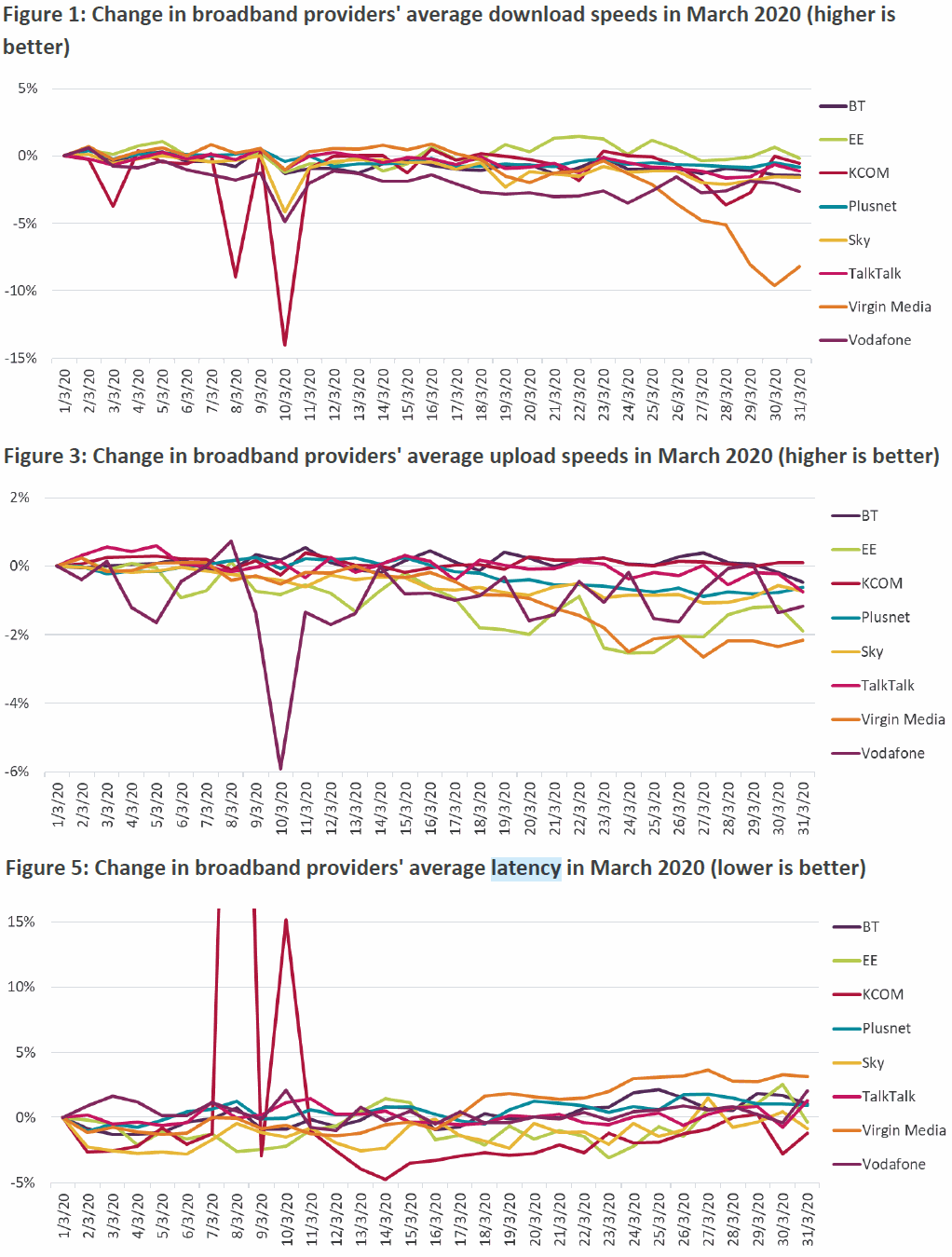
Tackling Speed Problems
Sometimes your speed may fall well below expectations and this is supported via Ofcom’s Voluntary Code of Practice for Broadband Speeds, which requires member ISPs to provide reliable estimates of connection performance during the order process and to also help resolve problems when they arise.
The latest code (details), which was introduced last year, provides more information during sign-up and strengthens the right to exit when speeds fall below the guaranteed minimum level. Providers are now given one month to resolve the problem and if they fail then customers can walk away, penalty-free (the right to exit also applies to contracts that include phone and TV services purchased with broadband in a bundle).
Take note that this code also includes Cable (e.g. Virgin Media) and FTTP providers, although the minimum guaranteed speed level for such ISPs is measured differently because these services aren’t affected by the same performance issues as other technologies. Instead the minimum guaranteed download speed will be at least 50% of the advertised speed of the package, rather than 10% for other connection types.
The code remains voluntary, which is understandable since many smaller ISPs find that the approach or costs involved with adapting to the rules can be too big (i.e. most won’t sign-up).
Ofcom Fixed Home Broadband Speeds Report 2020
https://www.ofcom.org.uk/home-broadband-performance-2020
UPDATE 2:51pm
We have a comment from Openreach (BT).
An Openreach Spokesperson said:
“It’s true, our network’s coped well during the pandemic. Despite the extra demand, in the last 30 days alone we’ve seen an increase in overall traffic volume across our network – particularly during daytime hours – and this wouldn’t have been possible without the skill and commitment of our people.
As key workers, they’ve been cracking on with the job of building and maintaining links for millions of homes, businesses, GP surgeries, care homes and a long list of critical services such as 999, and the new Nightingale hospitals.
We’re also continuing to invest in reaching the small minority of homes that can’t order a decent broadband service today, so it’s good to see that gap closing. There’s more to do though, and last week we upped our target to build ultrafast, ultrareliable Full Fibre broadband to 20 million premises by the mid-to-late 2020s – assuming we get the right investment conditions.”
Mark is a professional technology writer, IT consultant and computer engineer from Dorset (England), he also founded ISPreview in 1999 and enjoys analysing the latest telecoms and broadband developments. Find me on X (Twitter), Mastodon, Facebook, BlueSky, Threads.net and Linkedin.
« The Impact from Full to Capacity FTTC Broadband Cabinets – 2020
Ofcom – Full Fibre Broadband Grows to 3.5Million UK Premises »










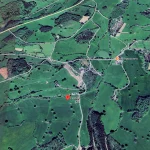











































“We’re also continuing to invest in reaching the small minority of homes that can’t order a decent broadband service today” – the problem is that they consider ADSL2+ to be decent.
seem more like “Selective” cherry picking of speed results 62mb/s Avg is great if your 50-100 meters from the cab, (unless they are mixing Virgin with VDSL results then the 62mb/s avg is meaningless as more or less you get what you pay for on virgin for 98% of areas, you get odd person on here who lives in a congested non upgraded area yet)
i can only get 30mb VDSL, so stuck with virgin until we get actual fibre to the pole (but soon as most of virgin is on DOCSIS 3.1 likely won’t matter